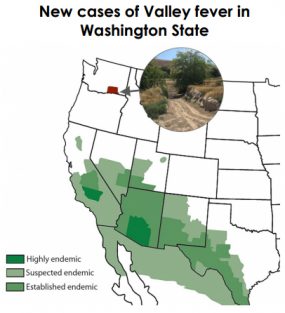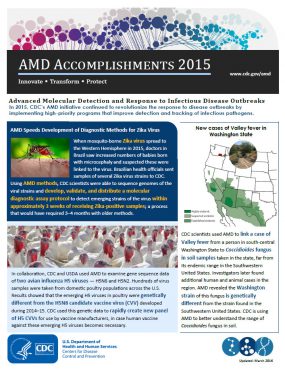AMD Activities: 2015
CDC completed the first step in developing methods for sequencing DNA of Mycobacterium tuberculosis directly from sputum. These methods have the potential to determine the antimicrobial susceptibility of TB bacteria within days rather than the weeks currently required, leading to earlier initiation of treatment and decreased spread of antimicrobial-resistant TB.

In collaboration, CDC and USDA used AMD to examine gene sequence data of two avian influenza H5 viruses ― H5N8 and H5N2. Hundreds of virus samples were taken from domestic poultry populations across the U.S. Results showed that the emerging H5 viruses in poultry were genetically different from the H5N8 candidate vaccine virus (CVV) developed during 2014–15. CDC used these genetic data to rapidly create new panel of H5 CVVs for use by vaccine manufacturers, in case human vaccine against these emerging H5 viruses becomes necessary.

CDC scientists used AMD to link a case of Valley fever from a person in south-central Washington State to Coccidioides fungus in soil samples taken in the state, far from its endemic range in the Southwestern United States. Investigators later found additional human and animal cases in the region. AMD revealed the Washington strain of this fungus is genetically different from the strain found in the Southwestern United States. CDC is using AMD to better understand the range of Coccidioides fungus in soil.

From 2013-2015, CDC submitted 20 times more sequence data to public gene repositories than it had in the years up to 2012.
